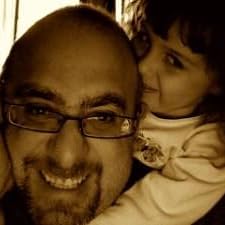William Ecenbarger
关于作者
I had the good fortune to grow up on Long Island, not far from New York, at a time when there were seven city daily newspapers plus two Long Island dailies. My father was a commuter and reader, and there was a continuous flow of newspapers into my home. The habit of newspaper reading, which began as a cobweb, is now a cable, and I still read five or six newspapers every day. I was a regular visitor to Ebbetts Field and Yankee Stadium, but my boyhood heroes were in the press box rather than on the field. It seemed to me that there could be no better life than to get paid for writing about baseball. I would go to games and then at home write stories about them, comparing my efforts with those of Dick Young, Joe Trimble, Dan Daniels, Red Smith, and other sportswriters. My first newspaper job was at sixteen for the Suffolk Journal, a weekly in my hometown that succumbed to circulation problems the following year. My title was "assistant editor" and my duties were driving galleys to the printer, getting coffee for the entire staff, which consisted of the editor and a photographer, feeding parking meters, performing emergency plumbing repairs, and similar tasks unworthy of a future Grantland Rice. I was allowed to write a weekly sports column, but the Ebbetts Field press box seemed a long way off. I attended Susquehanna University, Selinsgrove, Pa., graduating fifth in a class of eighty-nine. My four-year college career included one credit in journalism--that for a survey course taught by a general assignment reporter from Harrisburg. I was the editor of the campus weekly, but my study was concentrated in the fields of literature and political science--neither of which immediately prepared me to go to work for United Press International, which I did the day after graduation in 1961. Ebbetts Field, meanwhile, had become a parking lot. Except for a six-month hiatus for Army Reserve duty, I worked for UPI – in New York, Newark, N.J., and Harrisburg, Pa. – until 1970. My principal responsibility was state government coverage, but in 1967 and 1968 I was part of a UPI team that covered urban unrest in Newark, Baltimore, Pittsburgh, Cleveland and Detroit. I also covered the 1968 Democratic National Convention in Chicago – principally from the streets. Shortly after Knight Newspapers purchased the Philadelphia Inquirer in 1970, I was offered and accepted a job as Harrisburg bureau chief, supervising the work of first two and then three other reporters. While state government was my beat, I participated in the coverage of other major stories – the Berrigan Trial, Legionnaires Disease, Tropical Storm Agnes – and covered the Democratic National Conventions of 1972 and 1976. I was part of the Inquirer team that won a Pulitzer Prize in 1980 for coverage of the Three Mile Island nuclear accident.. I consider my major journalistic achievement a series of articles, written in 1978 with two other reporters, on corruption in the Pennsylvania Legislature. The series won numerous state and national awards, including the George L. Polk Award for Public Service, the Scripps-Howard Foundation Public Service Award, the Sigma Delta Chi National Award and the Associated Press Managing Editors (APME) National Award. In addition, it was a Pulitzer Prize finalist in the Public Service category. In 1976 the Inquirer and I were named defendants in a $6 million libel suit filed in connection with a series of stories I had written about a beverage chain with ties to organized crime. After a six-week trial in 1981, during which I was in the witness box for nearly ten days, the case was decided in favor of the defendants. However, the plaintiffs appealed the decision on ground that the judge had incorrectly instructed the jury. On April 21, 1986, the U.S. Supreme Court rejected the appeal and ruled in Hepps vs. PNI that in matters of public concern, private individuals cannot win libel damages without proving that published statements about them were false. I resigned from the Inquirer staff in 1981 and became a free lance writer. Under a contract with the Inquirer Sunday magazine, I wrote more than one hundred articles on topics ranging from the history of the pencil to the Ku Klux Klan between 1981 and 1996. My work was also published in national magazines and newspapers, and in 1992 I became a contributing editor to Reader’s Digest, which has published some fifty of my articles. Over the past fifteen years, I have written nearly three hundred travel articles for newspapers and magazines, and my writing assignments have taken me to some fifty countries in Europe, Asia, South America, Africa and the Pacific Rim. I was named “Lowell Thomas Travel Writer of the Year” by the Society of American Travel Writers in 1996. My first book, “Walkin’ the Line”, a travel-history narrative about the Mason-Dixon Line, was published by M. Evans in 2000. It received the Lowell Thomas Bronze Award for “Best Travel Book of 2000.” My second book, “Glory by the Wayside” (2008), is a photo-essay book about the old missionary churches of Hawaii that I co-authored with my wife, Susan Ecenbarger. My third book, “Kids for Cash,” was released by The New Press 2012. It details the scandal in northeastern Pennsylvania in which two county judges sentenced thousands of juvenile defendants to detention in return for kickbacks totaling $2.8 million from a private prison-management company. ###
阅读完整简历书籍
- 亚马逊音乐
畅听海量歌曲 - 亚马逊广告
吸引买家
无论他们身在何处
消磨时光 - 6pm
对时尚品牌
进行评分 - AbeBooks
图书、艺术
和收藏品 - ACX
有声读物出版
轻松实现 - 我要开店
启动卖家账户 - Veeqo
运输软件
库存管理
- 亚马逊企业采购商城
您的企业
所需的一切 - 亚马逊海外购
配送订单
国际 - 家庭服务
经验丰富的专业人员
满意度保障 - 亚马逊云科技
可扩展云
计算服务 - Audible
下载
有声读物 - Box Office Mojo
查找电影
票房数据 - Goodreads
电子书评论
和建议








